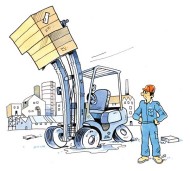 David Ellison, FLTA Chief Executive
David Ellison, FLTA Chief Executive
There are many good reasons for scheduling maintenance. For example, it helps to:
• spread costs
• predict costs
• reduce unscheduled downtime
• increase safety
Readers of this column will, of course, be interested in safety – but some may be cutting corners. With modern, more efficient equipment it is easy to be lulled into a false sense of security. If trained operators are carrying out their pre-shift checks and the truck has an annual Thorough Examination then surely everything is fine. If the truck breaks down, just call in a service engineer. No problem!
Actually, there might be…
Important as a Thorough Examination is, like an MOT inspection it only reports on the truck at one moment in time. It gives no guarantee for the next day or week, and certainly not for three months’ time. And as good as operators often are, not many can recognise the tell-tale signs of worn brakes, solid tyres, chains, etc. Regular service and inspection not only aids efficiency but can impact directly on safety.
The best way to organise regular maintenance is through a formal maintenance contract. This should be linked to the intensity of operation and the operating environment: the greater the use and the harsher the environment, the more frequent the service and inspection should be. In extreme cases, such as the mining industry, some trucks have to be serviced every few weeks.
If you haven’t put a maintenance contract in place for your operation then you should talk to your service provider now. And if that provider doesn’t offer a maintenance contract, then consider changing to a new company.
Be sure… be safe!
Complacency hurts
An operator recently had hydraulic oil blasted into his eyes and face requiring a trip to the hospital. He was the regular driver of the machine, yet failed to carry out pre-start checks to the appropriate standard, and didn’t notice the issue.
Upon inspection by the insurance company, it was discovered that the plastic sheathing around the hydraulic hose had peeled away exposing bare metal. This had worn through and ultimately failed. The FLT cab windscreen was also damaged and consequently did not prevent the high pressure oil escaping from hitting him directly in the face, which, unfortunately, is a tough way to learn a lesson that people do not know how to complete the pre-start checks properly.




Comments are closed.